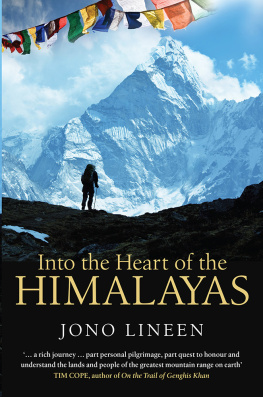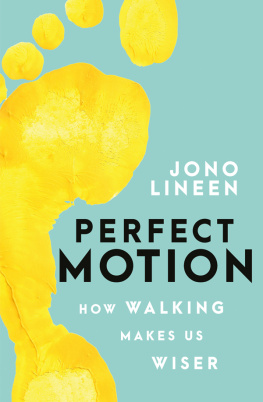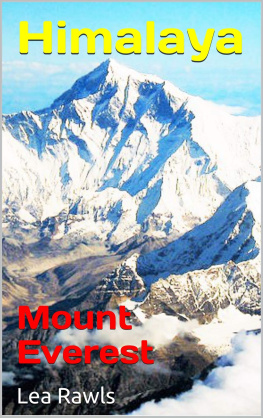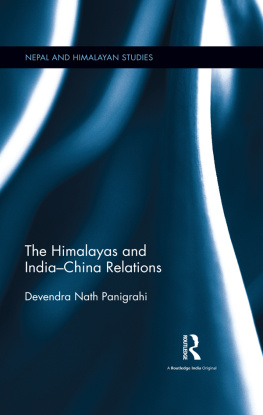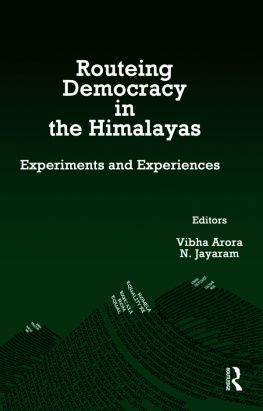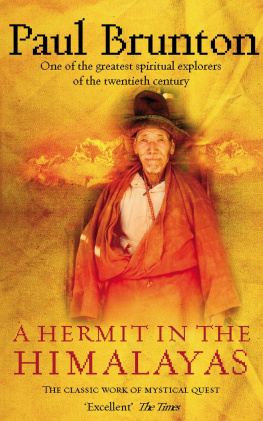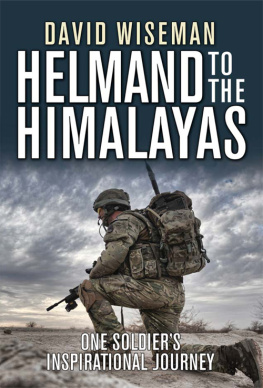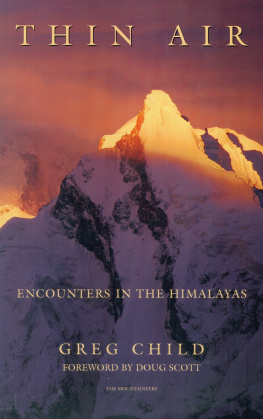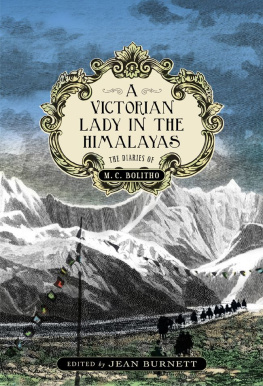Jono Lineen - Into the heart of the Himalayas
Here you can read online Jono Lineen - Into the heart of the Himalayas full text of the book (entire story) in english for free. Download pdf and epub, get meaning, cover and reviews about this ebook. year: 2014, publisher: Melbourne University Publishing, genre: Detective and thriller. Description of the work, (preface) as well as reviews are available. Best literature library LitArk.com created for fans of good reading and offers a wide selection of genres:
Romance novel
Science fiction
Adventure
Detective
Science
History
Home and family
Prose
Art
Politics
Computer
Non-fiction
Religion
Business
Children
Humor
Choose a favorite category and find really read worthwhile books. Enjoy immersion in the world of imagination, feel the emotions of the characters or learn something new for yourself, make an fascinating discovery.
- Book:Into the heart of the Himalayas
- Author:
- Publisher:Melbourne University Publishing
- Genre:
- Year:2014
- Rating:4 / 5
- Favourites:Add to favourites
- Your mark:
- 80
- 1
- 2
- 3
- 4
- 5
Into the heart of the Himalayas: summary, description and annotation
We offer to read an annotation, description, summary or preface (depends on what the author of the book "Into the heart of the Himalayas" wrote himself). If you haven't found the necessary information about the book — write in the comments, we will try to find it.
Into the heart of the Himalayas — read online for free the complete book (whole text) full work
Below is the text of the book, divided by pages. System saving the place of the last page read, allows you to conveniently read the book "Into the heart of the Himalayas" online for free, without having to search again every time where you left off. Put a bookmark, and you can go to the page where you finished reading at any time.
Font size:
Interval:
Bookmark:
T he path into the mountains followed the steep-walled gorge of the Astore River. Thousands of years of unceasing white water had carved the broad fissure through shaly, Paleozoic rock. The sun was framed by the canyons ochre walls. Its heat worked deep into the chasm.
I was following the only road up the valley, and at times the route was cut directly into the walls of the canyon. By the river it was hot and wet, but when the track pulled up and out of the gorge the air was desert dry. In the eight hours I spent on that first days trek I saw no one walking; a few jeeps rumbled past me, blowing their horns and spewing thick, altitude-choked clouds of exhaust, but I was the only person on foot along that desolate stretch of road. Even in the small village of Mangdoian the houses appeared deserted, no sign of even a tea stall. But I was not alone. Himalayan marmots chirped from the scree slopes above, and by the river there were birds. A few hours into the walk a red start landed on a nearby boulder, bowing, flaring its ruby tail. Shimmering black choughs followed, three in a pack, their scarlet beaks chattering. Not long after, six pigeons swooped by centimetres from my head.
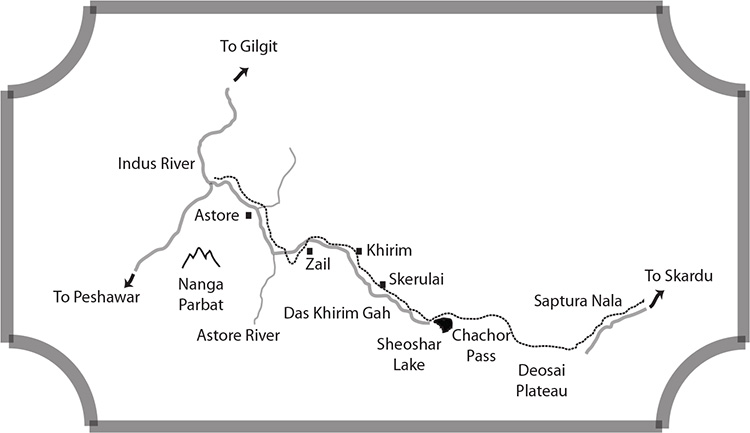
G ilgit, N orthern A reas, P akistan
Late in the afternoon the Astore Valleys first significant greenery appeared. Poplar trees were planted in straight lines, their heart-shaped leaves already tinged in gold, the first signs of fall at 2,500 metres. Not long after the plantation I saw the outskirts of Astore village. Astore is a ragged collection of low, mud-brick houses interspersed with a few corrugated steel government buildings: warehouses, the post office, a telephone exchange. Barbed wire was everywhere by the side of the road, between the walls of houses and around irrigation canals and barns. I rounded another bend and saw the village bazaar, a cluster of small one-storey buildings balanced ten metres above a broad alluvial fan of river stones on the waters edge.
I took a room in Astores only guest house then went to explore the village. The few dusty alleys, the vegetable bazaar and half a dozen flat-roofed shops took only a few minutes to browse. A mosque, a bank and a gun shop stood out as the most diligently maintained buildings. I lingered by the gun shop. It was an anomaly, clean, orderly and fronted with a self-closing aluminum and glass door. Its neatness attracted me, but it was fear that pulled me inside.
As a child in Belfast I remember watching British Army patrols on the streets; the men, drawn out in single file, moved in unison, quickly, stealthily, doorway to doorway, while my friends and I played scrappy soccer in the rain. To us kids the soldiers always looked the same: bulky flak jackets, helmets, pale faces drawn in concentration, eyes flicking back and forth snipers or anonymous bombers were the constant threat and always their hands gripped tight to matte black self-loading rifles. Maybe the real draw of the Astore gun shop was its potential for me to trace an old fear to its source.
I left the garbage-strewn alley; inside the place was all leather and steel. Along one wall, to the rear of a wood and glass counter, the goods were tidily displayed Russian, Chinese, American, German and Pakistani automatic, semiautomatic, and bolt-action rifles all arranged as to calibre, nationality and price. There was a greater selection of weapons at the gunsmiths than of vegetables in the bazaar.
The owner sat behind the counter, his generous girth smothering the stool beneath him. He wore a spotless shirt and trouser suit, the traditional salwar khamiz. His face was covered by an unruly black beard glistening from an application of coconut oil. His close-cropped head was crowned by a flat-topped woolen hat.
He smiled in the effortless way of good salesmen, not appearing surprised at all by the arrival of a foreigner. He asked if I wanted tea and motioned for me to sit. I dropped onto a cheap white plastic patio chair and he ordered a boy outside to fetch us tea. Mr. Abdul Salim introduced himself, adding in accented English,
Welcome to my shop. How can I help you?
I lied about my reasons for being there, feigning a hunters interest in his guns. Abdul nodded, but I could tell he was suspicious and in way of compliment I inquired why his business was so much better kept than its neighbours. This was the segue he needed to launch into an explanation of local gun culture. Handling a gun in Pakistan, he explained, is a mans rite of passage, a part of every males role in defending his familys honour.
Pakistan is an area of terminal instability and defending your family in such an environment means possessing a weapon. The Northern Areas recent history is particularly violent. In 1889 the principality of Gilgit fell under British rule and, as it straddles the border between India and Afghanistan, became a strategic outpost of British India. When British rule came to an end in 1947, the region was handed over to the state of Kashmir. This was the year of independence and partition for India and Pakistan. Maharaja Hari Singh of Kashmir delayed his decision in joining his Muslim-majority state with Pakistan or India. In Gilgit a battalion of the British Indian Army (soon to be absorbed into the Pakistani Army), the Gilgit Scouts, mutinied and declared the area a republic. A few days later Pakistan declared the entire Northern Areas within its borders and invaded the valley of Kashmir from the west and north. Maharajah Hari Singh asked for Indias assistance and the Indian Army reached the valley before the Pakistanis and held off the invasion. The result was the traditional borders of Kashmir were sliced in two and the whole of northwestern India and Pakistan have been in a state of flux ever since.
Mr. Salim told me his was the largest weapons market in the area. I was shocked there was more than one. It was disturbing to think that a village of Astores size needed such an array of firepower. The recent tide of surplus weapons from Afghanistan, he said, had put sophisticated weaponry within reach of many villagers.
I asked if he thought there were negative aspects to the number of guns in the district.
He looked at me, furrowing his brow.
Allah does not love the aggressor, my friend, he said. But a man must defend his family. This is his duty.
To move the discussion away from such a delicate subject I asked how business was. He smiled and admitted that, with the ongoing troubles in Kashmir and Afghanistan, demand was up.
Mr. Salim was generous with his time. He showed me dozens of weapons, disassembling the guns with the precise snap and click of a man comfortable with his goods. My reticence in handling them amused him.
I told him of my plans to walk to Nepal and immediately he offered me a gun at a bargain price. I declined the antique, wooden-stocked, bolt-action rifle; it would have been comically conspicuous strapped to my backpack. Abdul shook his head in disbelief. He could not comprehend someone undertaking such a journey without a weapon.
By the third cup of tea it was obvious I was not a customer and our conversation petered out agreeably. We shook hands, I stepped outside and an old man in an undyed woolen cloak brushed past offering me the traditional Muslim words of greeting,
A Salam Alaykum . May peace be upon you.
That first night I stayed in the towns single guest house. The front desk was a table in the dining room on which I signed multiple forms, all of which asked for my fathers name in full.
The owner sat unmoving on the other side of the table. He was a large man with the requisite beard and salwar khamiz. In my short time there I never saw him without a scowl on his face. He didnt offer his name and I didnt ask. I was the hotels only guest.
Font size:
Interval:
Bookmark:
Similar books «Into the heart of the Himalayas»
Look at similar books to Into the heart of the Himalayas. We have selected literature similar in name and meaning in the hope of providing readers with more options to find new, interesting, not yet read works.
Discussion, reviews of the book Into the heart of the Himalayas and just readers' own opinions. Leave your comments, write what you think about the work, its meaning or the main characters. Specify what exactly you liked and what you didn't like, and why you think so.

